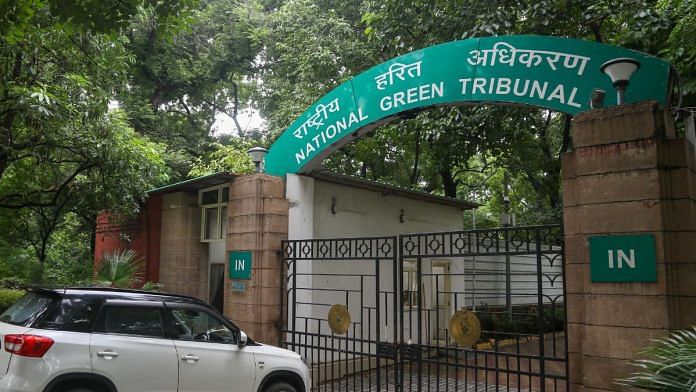New Delhi: Seven of 13 sewage treatment plants (STPs) in Bihar, constructed in the last decade with central funds, were operational, the National Mission for Clean Ganga (NMCG) has told the National Green Tribunal (NGT).
The state received Rs 3,900 crore for the plants that were built under the Namami Gange Programme, said the NMCG in an affidavit to the NGT.
The NMCG, which aims to reduce pollution and rejuvenate the Ganga, listed the following reasons as to why six were not functional — one had been built but awaited a power connection, another had incomplete effluent pipeline work, while the state pollution control board was yet to start sampling in the remaining three.
Even the seven operational ones had not complied with regard to the presence of faecal coliform in the river. Faecal coliform (FC) bacteria, such as E. coli, are found in excreta that contaminates water through untreated sewage. The higher their level, the higher the presence of disease-causing pathogens in the water.
The permissible limit for faecal coliform (FC) in the Ganga is 2,500 MPN per 100 ml of water, while the desirable level is 500 MPN/100 ml. However, the FC levels in the Ganga are often much higher than the permissible limit. The NMCG’s affidavit shows that in most places surveyed, the FC levels were more than 10,000 MPN/100ml.
The NMCG filed its affidavit pursuant to the NGT’s direction in May, when the tribunal asked the body to disclose funds it released to Bihar for the construction of STPs and the utilisation of the money allocated to the state under the Namami Gange Programme and the earlier Ganga Action Plan (GAP).
It also directed the NMCG to apprise about Bihar’s performance in reducing the sewage-pollution load entering the river in quantifiable terms.
Also read: ‘Unconstitutional’: SC junks Centre’s environmental clearance exemption to soil extraction for infra
Bihar got Rs 3,914.53 crore
According to the NMCG, the Centre allocated over Rs 370 crore to Bihar under two phases of GAP for 14 sanctioned STP projects. While GAP concluded in 2000, the Narendra Modi government in 2014 launched the Namami Gange Programme, an initiative to clean the Ganga. Since then, it has transferred Rs 3,914.53 crore for STP-related works to Bihar.
Seven STPs — Beur, Karmalichak, Saidpur, Pahari, Sonepur (Saran), Barh and Sultanganj — were found non-compliant as far as FC presence was concerned.
Two STPs in Patna, Danapur and Maner, which were inaugurated by Modi on 2 October, are yet to start sampling work.
Similarly, sampling in Chhapra and Munger has not begun, while the completed STP in Patna’s Mokama has no power connection and awaits the railways’ permission for it.
The STP in Bhagalpur too is complete, but the effluent pipeline work is partially done.
NMCG told the tribunal that it sought a report twice from Bihar in June and September on the non-compliant STPs and also held a review meeting where it was decided to resolve the matter at the earliest.
Water quality
The Commission also said regular fortnightly monitoring was done at 33 locations on the main stem of the Ganga to monitor the water quality of the river and its tributaries. The data for the last two years was analysed on the median values and primarily checked whether they were meeting the bathing criterion.
It was observed, the NMCG said, that the entire stretch met the bathing criterion with regard to dissolved oxygen and biochemical oxygen demand. However, the stretch fell short on faecal coliform, even though levels had decreased compared to preceding years at most locations.
The stretches under inspection were Buxar to Bhagalpur, along Buxar, Patna, Fatwah and Bhagalpur.
Highlighting its efforts to reduce pollution in the Ganga, the NMCG said it had listed all towns where pollution abatement projects were necessary for the river.
It has asked Bihar for a detailed project report (DPR) for such plans, which are necessary for rejuvenation of the river flowing through the state.
These letters were sent in July, August and September, the NMCG said, though it did not mention if it had got a reply.
(Edited by Tikli Basu)
Also read: SC sets aside NGT restraint on Shimla development plan — ‘environmental aspects taken care of’






